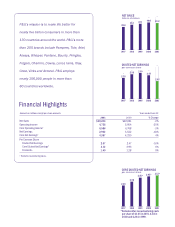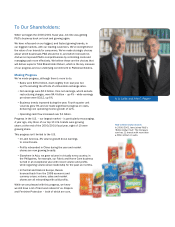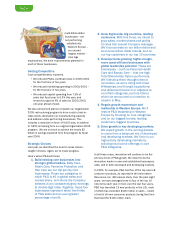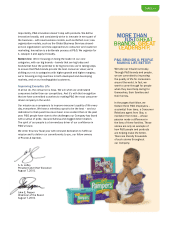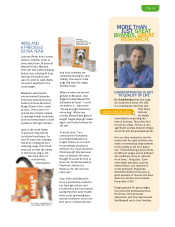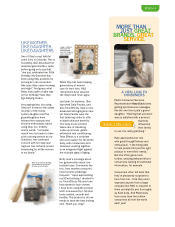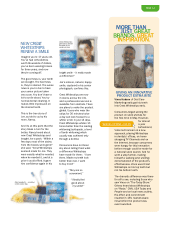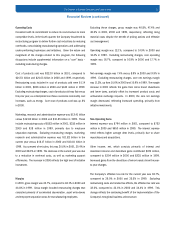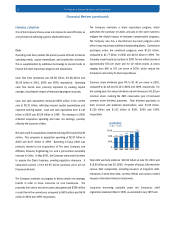Proctor and Gamble 2001 Annual Report Download - page 4
Download and view the complete annual report
Please find page 4 of the 2001 Proctor and Gamble annual report below. You can navigate through the pages in the report by either clicking on the pages listed below, or by using the keyword search tool below to find specific information within the annual report.
multi-billion-dollar
businesses -- are
not performing
satisfactorily.
Western Europe –
our second
largest market –
also lags
expectations. We have improvements planned for
each of these businesses.
Getting Competitive
Cost competitiveness improved.
• We reduced P&G’s overhead costs in 2000/2001
for the first time in five years.
• We reduced marketing spending in 2000/2001 –
for the first time in five years.
• We reduced capital spending from 7.6% of
sales last fiscal year to 6.3% this year, and
revised our goal to 6% of sales by 2002/2003,
one year ahead of plan.
We also announced plans to broaden our Organization
2005 restructuring program to drive costs to best-in-
class levels, rationalize our manufacturing capacity
and address under-performing businesses. This
includes a reduction in force of 9,600 jobs, in addition
to 7,800 remaining from our original Organization 2005
program. We are on track to achieve the nearly $2
billion in savings expected from this program by fiscal
year 2004.
Strategic Choices
Last year, we identified the need to make clearer,
tougher choices. Again, we’ve made progress.
Here’s where P&G will focus:
1. Build existing core businesses into
stronger global leaders. Baby Care,
Fabric Care, Feminine Protection and
Hair Care are our top-priority core
businesses. These are categories in
which P&G is #1 in global sales and
market share, and where the Company
believes it can consistently grow earnings
at double-digit rates. Together, these four
businesses represent about two-thirds
of P&G sales and an even greater
percentage of profit.
2. Grow big brands, big countries, leading
customers. With this focus, we intend to
grow sales, market shares and profits
at rates that exceed Company averages.
We’ll concentrate on our billion-dollar and
soon-to-be billion-dollar brands, and on
our top customers in our top 10 countries.
3. Develop faster-growing, higher-margin,
more asset-efficient businesses with
global leadership potential. These are
businesses – such as Personal Health
Care and Beauty Care – that are high
Total Shareholder Return performers.
We’ll develop them through internal
innovation, as we’re doing with Crest
Whitestrips, and through acquisitions
and alliances that are in or adjacent to
core P&G categories, such as Clairol,
which we announced our intention to
acquire in May.
4. Regain growth momentum and
leadership in Western Europe. We’ll
restore P&G leadership in Western
Europe by focusing on core categories
and on our biggest brands, leading
customers, biggest countries.
5. Drive growth in key developing markets.
We expect growth in the coming decade
to come from a balanced mix of developed
and developing markets. We’ll win in our
high-priority developing markets by
tailoring low-income offerings in core
P&G categories.
In all these areas, innovation will continue to be the
primary driver of P&G growth. We intend to be the
innovation leader in new and established businesses
alike, and in both developed and developing markets.
In 2000, for example, P&G had five of the top new U.S.
consumer products, as reported in the Information
Resources, Inc. (IRI) annual study. Over the past eight
years, we have averaged three to four of the top 10
new items each year. In fact, over the last four years,
P&G has launched 13 new products in the U.S., each
of which has exceeded $100 million in sales – nearly
a third of all new consumer products during that time
that beat the $100 million mark.
TWO


